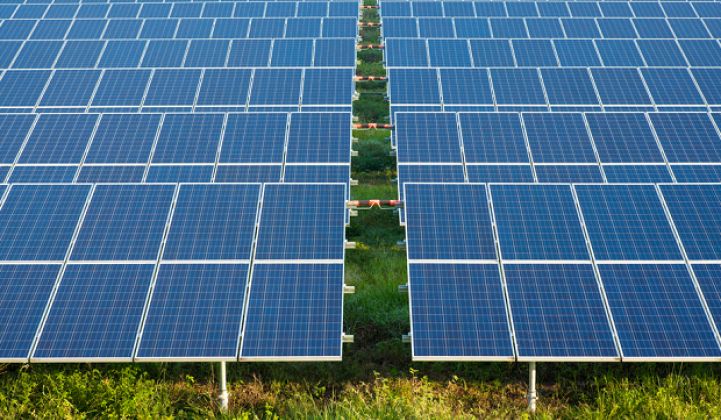There is no doubt that the Trump administration’s tariffs on solar modules slowed procurement of solar in the United States, with front-of-the-meter utility photovoltaics taking the biggest hit.
Through the second half of 2017, as the U.S. International Trade Commission deliberated on Suniva’s trade case, relatively few new power-purchase agreements (PPAs) were signed as developers waited to see how severe the tariffs would be, amounting only to a total of 2.0 gigawatts.
Once the tariffs were passed, it was clear utility solar would see the largest increase in total system price on a percentage basis. However, since the implementation of tariffs in January, new project announcements have surged.
Utility PV Contracted Pipeline, Q4 2017-Q2 2018

Source: Wood Mackenzie Power & Renewables
Wood Mackenzie Power & Renewables' U.S. Utility PV Quarterly Update Q2 2018 reports that 8.5 gigawatts of utility PV projects have been announced in the first half of 2018, with 5.1 gigawatts in Q1 and 3.4 gigawatts in Q2. More utility PV projects have been announced this year than came online in 2014 and 2015 combined — and there are still three months left in the year.
This amounts to more project announcements than the cumulative capacity of new residential PV installed from 2015 through today. What’s more, the pipeline of utility PV in development now stands at 23.9 gigawatts, its highest point in the history of U.S. solar.
Several factors have led to this surge in procurement. Developers and engineering, procurement and construction companies reported that during the International Trade Commission deliberations, significant portions of their pipelines were temporarily shelved until they received clarity on how significant the tariffs would be. Once tariffs were announced, projects were able to move forward to meet the pent-up demand. Additionally, voluntary procurement of utility PV based primarily on its economic competitiveness with wind and natural gas has long been the main driver of large-scale solar for utilities.
However, there has also been a recent surge in procurement from corporate customers. Project developers and corporations have both reported that with the federal Investment Tax Credit set to step down in 2020, utility PV system costs at an all-time low, and the growing risk of the Federal Reserve raising interest rates, commercial and industrial customers are coming to view 2018 and 2019 as the best time to secure a low-price PPA for utility PV. Consequently, we have seen 19 percent of 2018 project announcements coming from developments that will supply energy to corporate offtakers such as Microsoft, Facebook, Walmart and Target.
Procurement Driver of Utility PV PPAs Signed in 2018 YTD

Source: Wood Mackenzie Power & Renewables
This does not mean the utility solar market has rebounded entirely from the impact of module tariffs. Several utility solar developers (such as like Cypress Creek Renewables, which has shelved 20 percent of its pipeline due to tariffs) have reported one or more projects in their pipeline for which they are still in the process of renegotiating the PPAs, as the projects proved to be no longer financially feasible after the tariffs were implemented. While this seems to be a minor share of projects for developers, it still represents a portion of the pipeline hurt by tariffs.
Despite the tariffs' impact to past projects, developers are looking to grow their pipelines. Utilities and corporate offtakers will continue to lock in PPAs eligible for the 30 percent ITC and will keep procurement levels high through 2019. With many projects still moving forward to meet pent-up demand, 2018 procurement will likely exceed 11.0 gigawatts by year’s end.
***
Learn more about Wood Mackenzie Power & Renewables research.




